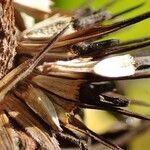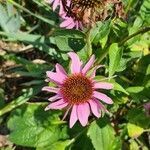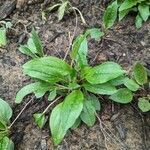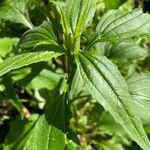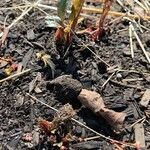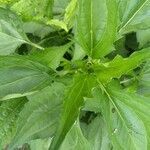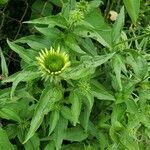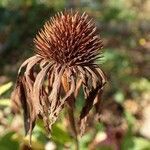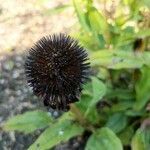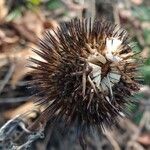Stems 1–few from a coarsely fibrous-rooted crown, caudex, or short, stout rhizome, hirsute to glabrous, 6–18 dm, simple or often few-branched; lvs ± hairy on both sides, toothed or less commonly entire, the main ones with broadly lanceolate to elliptic or broadly ovate blade to 15 × 10 cm, mostly 1.5–5 times as long as wide, rather abruptly contracted (or even rounded or subcordate) to the petiole; disk 1.5–3.5 cm wide; rays reddish-purple to occasionally pale pink, 3–8 cm, drooping; 2n=22. Woods and prairies, generally in moister sites than no. 3 [Echinacea pallida Nutt.]; chiefly Ozarkian and midwestern, from Ill. and s. Io. to e. Okla., extreme ne. Tex., and c. La., e. irregularly to s. Mich., Ky., Tenn., and Ga., and less commonly to Va. and N.C. June–Oct.
A perennial plant. It develops underground stems or rhizomes. It grows 90-120 cm high and 45-60 cm across. The leaves are bristly and dark green. The plant is coarse and the stems stout. The flower heads are large and form a cone. The purple-red ray florets are around this.
